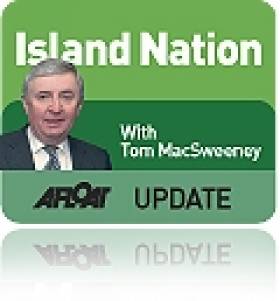Displaying items by tag: National Marine Manufacturers' Association of America
Why Boating and Music Go Hand-in-Hand
It runs a "Discover Boating" national awareness project creating interest amongst the public in going afloat. "We identified the most popular nautical-themed songs from a variety of artists and genres, all of which illustrate why boating and music go hand-in-hand," said Carl Blackwell, the Association's Vice-President running the project. "They illustrate why boating and music go hand-in-hand, the wind in your hair, sun on your face, friends and family aboard. Music and boating provide an escape from the pressures of life."
Kenny Chesney's song 'Boats' has been voted the top boating son in the USA
These are the Top Ten Boating Songs:
BOATS – sung by KENNY CHESNEY;
BRANDY YOU'RE A FINE GIRL BY LOOKING GLASS;
COME SAIL AWAY BY STYX;
IF I HAD A BOAT BY LYLE LOVETT;
INTO THE MYSTIC BY VAN MORRISON;
PROUD MARY BY CREEDENCE CLEARWATER REVIVAL;
REDNECK YACHT CLUB BY CRAIG MORGAN;
SITTIN' ON THE DOCK OF THE BAY BY OTIS REDDING;
SON OF A SON OF A SAILOR BY JIMMY BUFFETT;
SOUTHERN CROSS BY CROSBY, STILLS & NASH.
These are chosen from an American viewpoint, I wonder what an Irish list would include? Let me know in the comment box below.
WIND PLAN WILL CHANGE THE HARBOUR
Wind turbines have become an established feature on the coastline and around many parts of the country. Controversy has often surrounded their construction as an alternative energy supply. Wind turbines nearly four hundred feet high which would change the appearance of Cork Harbour are being proposed by four pharmaceutical companies in Ringaskiddy. They want cheaper energy and have formed the Lower Harbour Energy Group. GlaxoSmithKline, Novartis, Centocor and DePuy plan to construct a total of turbines between their sites. Public response to the proposals will be interesting. Indications are that the body of the turbines would be 78 metres, the blades a further 40 metres high, making a total of around 118 metres.

A cargo ship navigates Cork Harbour. Photo: Bob Bateman
There are serious concerns about 336 offshore turbines around the UK coastline, because their foundations are suffering from subsidence, sinking into the sea. Checks are being made on a wind farm off Essex
another in Liverpool Bay, of turbines at Blyth, Northumberland and Robin Rigg in the Solway Firth. If repairs have to be made to all of them, the total bill could be £50m. stg.
The Scottish Government is attempting to encourage Norwegian Statoil to locate the world's first floating windfarm either off the Isle of Lewis or the Aberdeenshire coastline. Statoil is also considering sites in Norway and the USA for the development, intended to have a capacity of up to 100 megawatts.
• This article is reprinted by permission of the CORK EVENING ECHO in which Tom MacSweeney writes maritime columns twice weekly. Evening Echo website: www.eecho.ie























